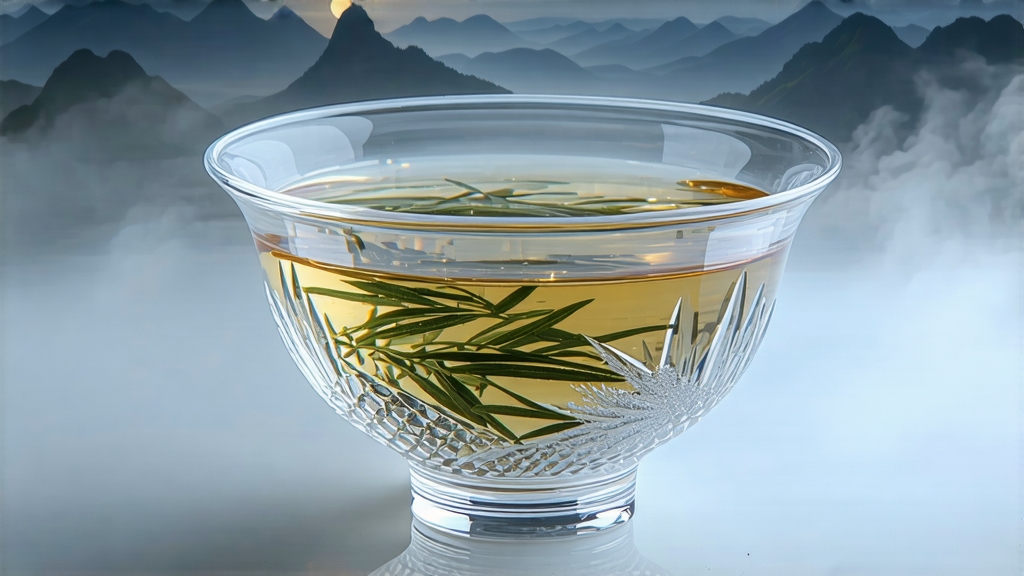
Tucked away in the subtropical highlands of southern Yunnan, where the Mekong carves silver ribbons through morning mist, a tea that never meets the sun quietly earns its name: Yue Guang Bai—“Moonlight White.” Unlike the better-known Fujian white teas that bask in gentle daylight withering, this Yunnanese cultivar is plucked only between dusk and dawn, then left to breathe under starlight for up to seventy-two hours. The result is a leaf that looks as if it has been brushed by frost on one side and kissed by cinnamon on the other, and a liquor that tastes like mountain orchids drizzled with wild honey. For the international enthusiast seeking a white tea that marries the elegance of minimal processing with the terroir punch of ancient tea forests, Yue Guang Bai offers a luminous portal into China’s least-understood tea family.
Historical whispers
White tea as a formal category first appears in Song-dynasty treatises from Fujian, yet the practice of air-drying buds in Yunnan is probably far older. Caravans plying the Ancient Tea Horse Road needed lightweight, non-perishable goods; lightly withered leaf fit the bill. Locals claim that during the Qing dynasty a caravan mistress, unwilling to expose her precious silver-tip pickings to the scorching Yunnan sun, spread them on bamboo trays inside a horse-stable loft. Night breezes drifting through slatted walls cured the buds into a pale, moon-sheened tea that fetched higher prices in Lhasa than any black cake. Whether legend or ledger fact, the story captures the essence of Yue Guang Bai: protection from direct light, long wither, and a patient wait for nature to finish what fire and rolling never touch.
Terroir and cultivar
Yue Guang Bai is not tied to a single mountain brand; rather, it is a style, most authentically crafted from Da Ye (broad-leaf) assamica trees growing between 1,200 and 1,800 m in Lincang, Simao, and Xishuangbanna. These trees—many over 200 years old—develop leaves thick with polyphenols and long-chain amino acids, precursors to the tea’s signature hay-malt sweetness. Spring buds, fat as quills and downy white, are plucked with the standard “one bud, one leaf” compromise that balances delicacy with enough chlorophyll for the characteristic two-tone colour: silvery pubescence on the convex face, a muted charcoal on the reverse where anthocyanins concentrate.
Crafting by starlight
Processing is disarmingly simple yet relentlessly precise. Picking begins after twilight when dew lowers leaf temperature and volatiles are trapped inside tissue. Workers lay the harvest on screened bamboo racks inside ventilated barns; no direct sunlight, no artificial heat. For the first twelve hours the leaf rests, allowing marginal enzymatic oxidation often mislabeled as “fermentation.” Every two hours the tea is gently turned by hand to ensure even moisture loss. Around 3 a.m., when mountain humidity peaks, doors are closed to create a passive sauna that softens grassy notes into peach skin and vanilla. At dawn the cycle repeats: doors opened, moisture wicked away, leaf slowly curling like a cat in slumber. After sixty to seventy hours the batch reaches 8–9 % residual moisture and is given a final “moon bake”: charcoal embers buried in ash provide a radiant heat below 40 °C for ninety minutes, stabilising the leaf without caramelising sugars. No rolling, no panning, no shaping—just air, patience, and darkness.
Grades and styles
Commercial grades hinge on bud-to-leaf ratio and withering uniformity.
- Silver Moonlight (Yin Yue Guang): 95 % buds, palest liquor, lilac nose, lactone cream finish.
- Crescent Moon (E Yue Guang): one bud and one unfolded leaf, peach fuzz aroma, orange zest mid-palate.
- Moon Cake (Yue Bing): the same material steamed and compressed into 100 g mini cakes for micro-ageing; after five years the honey thickens into Medjool-date syrup and a hint of sandalwood emerges.
Each grade shares the hallmark bi-coloured leaf, but only Silver Moonlight carries the opalescent down that flashes like frost under a loupe.
Chemistry in the